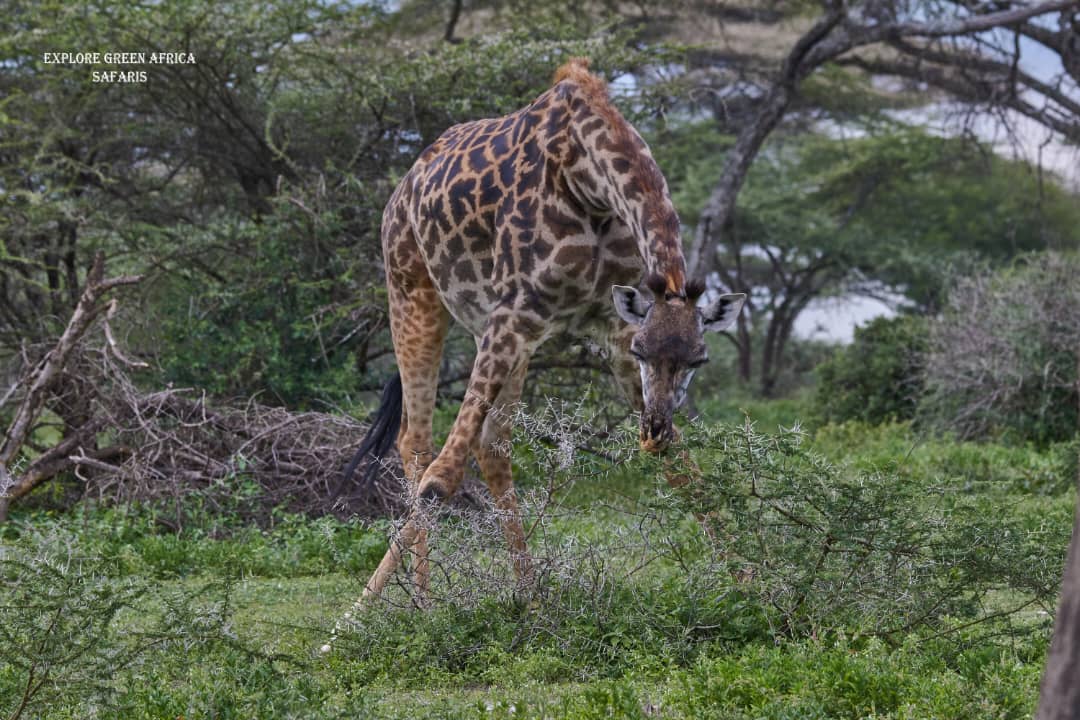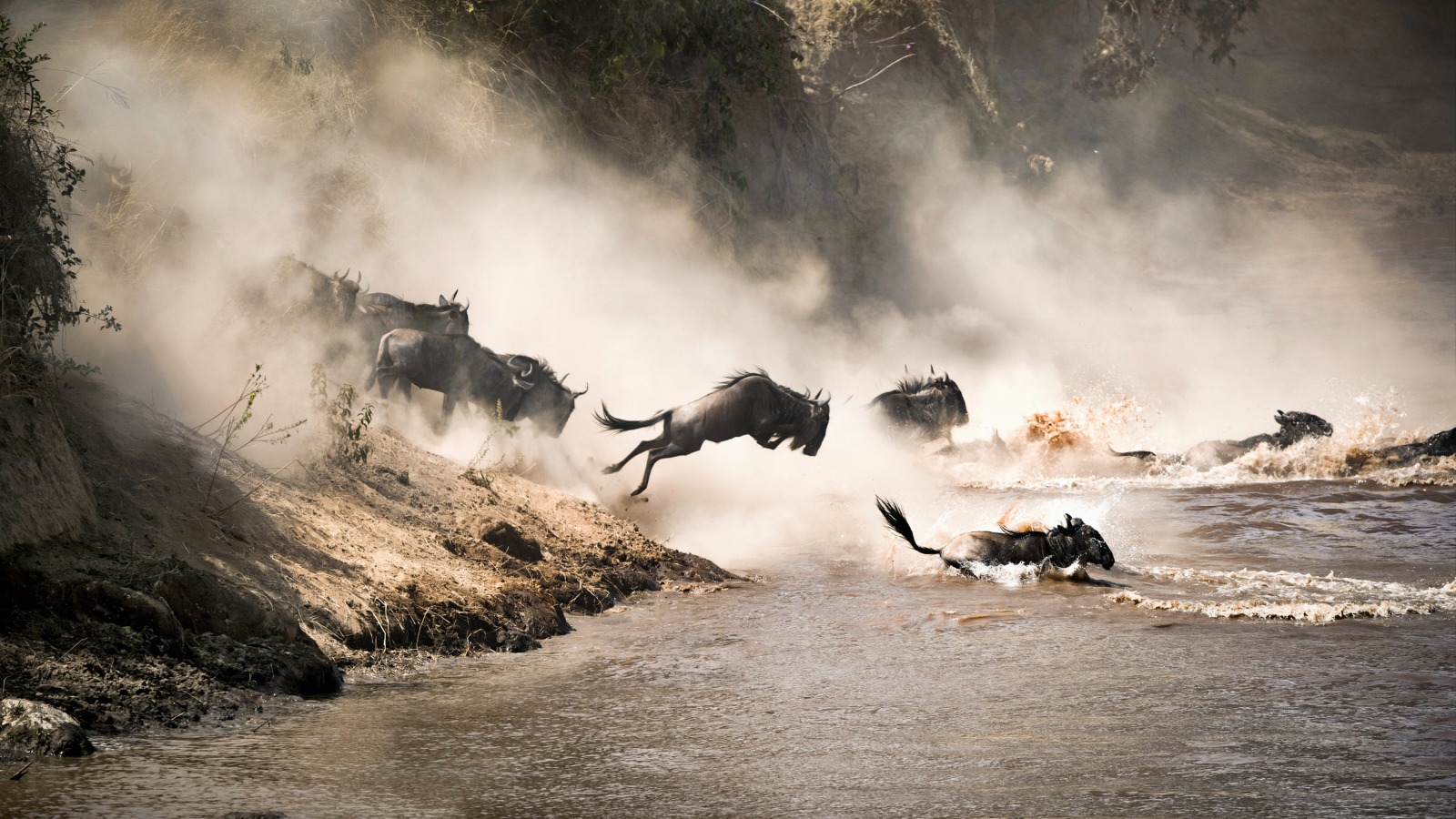Premium Listing
5 DAYS TANZANIA CALVING SEASON - 5 days
Tanzania - Adventure Tours

Tour Itinerary
Calving season peaks in February and the best place to catch this striking phenomenon is at the Serengeti National Park in Ndutu Area. It's easy to predict the migration during this month as migrating animals like zebras and wildebeest give birth to their offspring. Mobile camps are fully operating during February when the action in safaris is at its heights. It's typical to see animals giving birth, as well as predators catching their prey.
Day 1: Arusha – lake Manyara Park – Karatu
You'll be picked up from your hotel at 8 am and start a beautiful journey across the Great Rift Valley for a full-day game drive. Although small in dimension (205 sq miles), the park has breathtaking scenery and is well famous for its lush acacia forest, giant figs, mahogany trees, as well as a growing population of baboons and blue monkeys. Permanent residents of this park include giraffes, elephants, impalas and a huge amount of buffaloes. The lake is also home to a large number of hippos. The landscapes of Lake Manyara are something that can not be described in words. The game drives along the lake provide stunning photo opportunities of giraffes and buffaloes in the foreground and the lake in the background. Some extra tours are possible, including a bike tour or a boat excursion.
After our extensive game drive experiencing the varied sights and sounds of the wilderness, we drive to your accommodation for dinner overnight.
Day 2: Karatu – Serengeti South (Ndutu)
After breakfast we will head to the Lake Ndutu region, situated in the Ngorongoro conservation area, a sublime landscape of the southern Serengeti eco-system. The drive takes approximately 3 hrs.Lake Ndutu, alkaline like most of the other Rift Valley Lakes, is however a viable source of water and is frequented by a wide array of the myriad wildlife here inhabiting.We arrive in time for a delectable luncheon at the lodge or tented camp and with appetites sated, we undertake our afternoon game drive in the Ndutu region. The majority of the wildebeest migration can normally be found on the short-grass plains from December to April. The area is usually heavily populated with elephant, giraffe, over four hundred species of birds and a plethora of other resident game.
After an unforgettable day, we head back to the Camp to dine and unwind by a fire on the plain under the star bright endless African night sky.
Day 3: Full Day Exploring Serengeti (Ndutu)
After our hearty breakfast, we head out to enjoy a full day game drive in the Ndutu region. We endeavor to explore the range of different habitats found here that include swamps, woodland, soda lakes, and the world-famous Serengeti short grass plains. We will see the awesome sight of the great thronging herds of wildebeest and zebra. During a short time, frame around January, normally lasting for about 3 weeks, the majority of the wildebeest calves, dropping in the region of half a million young in this awesome act of synchronized birthing. The sea of grass provides little cover and the young Wildebeest calves can run minutes after they are born and within 3 days, they are normally strong enough to keep up with the herd.
As our full day of adventure upon the ‘Endless Plain ends, we depart to our accommodation for dinner and Overnight.
Day 4: Serengeti South – Ngorongoro Crater Tour – Karatu
After breakfast, you will drive from Southern Serengeti ( Ndutu) to the Ngorongoro Crater.
When you first see Ngorongoro Crater, it looks like a forgotten world. Concealed by the steep volcanic walls is a pristine wilderness including sweeping savannah, pockets of acacia woodland, and glistening lakes and swamps. The Crater was created when a large volcano exploded and collapsed in on itself two to three million years ago.
The drive down into the Crater is an adventure in itself and when you reach the Crater floor, you quickly find yourself amongst large numbers of wildebeest, zebra, gazelle, and more than 500 bird species. The Crater provides you with the best chance of seeing the endangered black rhino, which can sometimes be spotted in the open grasslands. After the game drive drive back to Karatu for dinner & overnight.
Day 5: Karatu – Tarangire National Park – Arusha
Early morning after breakfast, we'll depart for Tarangire National Park. The Park is named after the Tarangire River which runs through it. This ‘river of warthogs’ is the only source of water for wildlife in the region during the dry season. In places, the vegetation is quite dense, including elephant grass, acacia woodlands and lush groundwater forest. The Park is well known for its elephant families, which can often be seen congregating by the river. You may also see giraffes, bushbucks and hartebeests. These animals are closely followed by a range of predators, including lions and leopards. There are more breeding species of birds found in Tarangire National Park than anywhere else on the planet!
After lunch and an extensive game drive, we will head back to Arusha.
Day 1: Arusha – lake Manyara Park – Karatu
You'll be picked up from your hotel at 8 am and start a beautiful journey across the Great Rift Valley for a full-day game drive. Although small in dimension (205 sq miles), the park has breathtaking scenery and is well famous for its lush acacia forest, giant figs, mahogany trees, as well as a growing population of baboons and blue monkeys. Permanent residents of this park include giraffes, elephants, impalas and a huge amount of buffaloes. The lake is also home to a large number of hippos. The landscapes of Lake Manyara are something that can not be described in words. The game drives along the lake provide stunning photo opportunities of giraffes and buffaloes in the foreground and the lake in the background. Some extra tours are possible, including a bike tour or a boat excursion.
After our extensive game drive experiencing the varied sights and sounds of the wilderness, we drive to your accommodation for dinner overnight.
Day 2: Karatu – Serengeti South (Ndutu)
After breakfast we will head to the Lake Ndutu region, situated in the Ngorongoro conservation area, a sublime landscape of the southern Serengeti eco-system. The drive takes approximately 3 hrs.Lake Ndutu, alkaline like most of the other Rift Valley Lakes, is however a viable source of water and is frequented by a wide array of the myriad wildlife here inhabiting.We arrive in time for a delectable luncheon at the lodge or tented camp and with appetites sated, we undertake our afternoon game drive in the Ndutu region. The majority of the wildebeest migration can normally be found on the short-grass plains from December to April. The area is usually heavily populated with elephant, giraffe, over four hundred species of birds and a plethora of other resident game.
After an unforgettable day, we head back to the Camp to dine and unwind by a fire on the plain under the star bright endless African night sky.
Day 3: Full Day Exploring Serengeti (Ndutu)
After our hearty breakfast, we head out to enjoy a full day game drive in the Ndutu region. We endeavor to explore the range of different habitats found here that include swamps, woodland, soda lakes, and the world-famous Serengeti short grass plains. We will see the awesome sight of the great thronging herds of wildebeest and zebra. During a short time, frame around January, normally lasting for about 3 weeks, the majority of the wildebeest calves, dropping in the region of half a million young in this awesome act of synchronized birthing. The sea of grass provides little cover and the young Wildebeest calves can run minutes after they are born and within 3 days, they are normally strong enough to keep up with the herd.
As our full day of adventure upon the ‘Endless Plain ends, we depart to our accommodation for dinner and Overnight.
Day 4: Serengeti South – Ngorongoro Crater Tour – Karatu
After breakfast, you will drive from Southern Serengeti ( Ndutu) to the Ngorongoro Crater.
When you first see Ngorongoro Crater, it looks like a forgotten world. Concealed by the steep volcanic walls is a pristine wilderness including sweeping savannah, pockets of acacia woodland, and glistening lakes and swamps. The Crater was created when a large volcano exploded and collapsed in on itself two to three million years ago.
The drive down into the Crater is an adventure in itself and when you reach the Crater floor, you quickly find yourself amongst large numbers of wildebeest, zebra, gazelle, and more than 500 bird species. The Crater provides you with the best chance of seeing the endangered black rhino, which can sometimes be spotted in the open grasslands. After the game drive drive back to Karatu for dinner & overnight.
Day 5: Karatu – Tarangire National Park – Arusha
Early morning after breakfast, we'll depart for Tarangire National Park. The Park is named after the Tarangire River which runs through it. This ‘river of warthogs’ is the only source of water for wildlife in the region during the dry season. In places, the vegetation is quite dense, including elephant grass, acacia woodlands and lush groundwater forest. The Park is well known for its elephant families, which can often be seen congregating by the river. You may also see giraffes, bushbucks and hartebeests. These animals are closely followed by a range of predators, including lions and leopards. There are more breeding species of birds found in Tarangire National Park than anywhere else on the planet!
After lunch and an extensive game drive, we will head back to Arusha.











